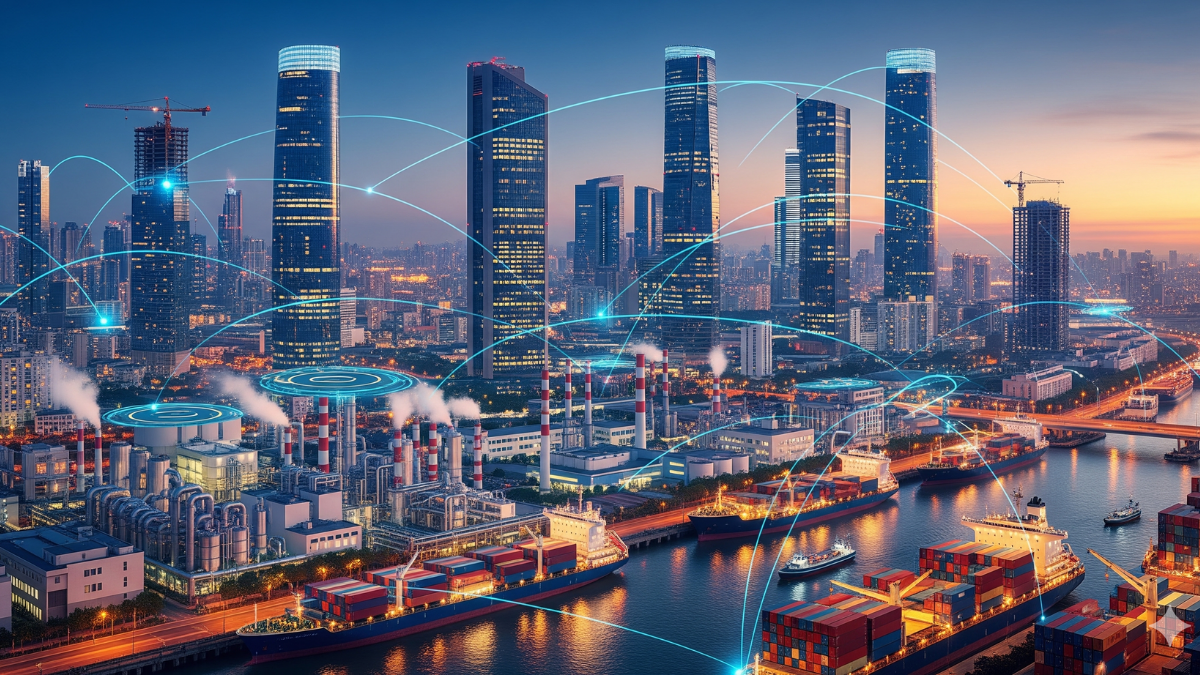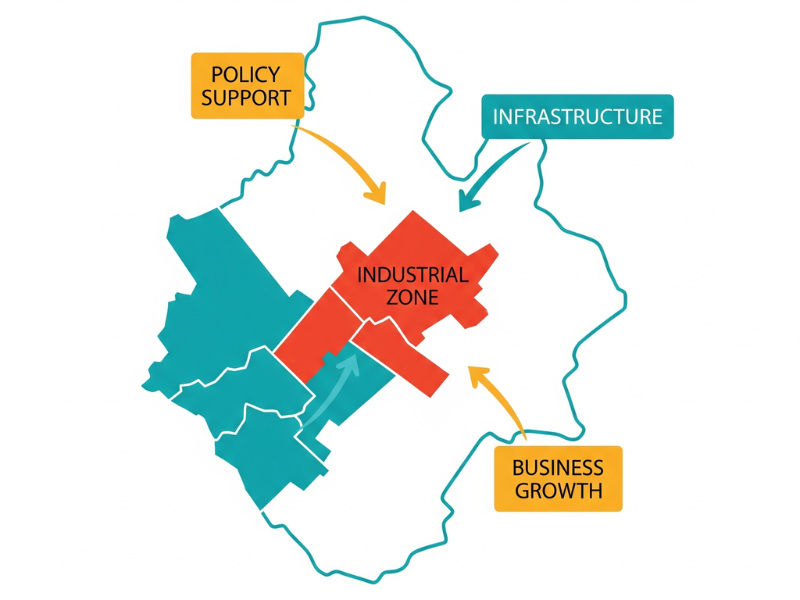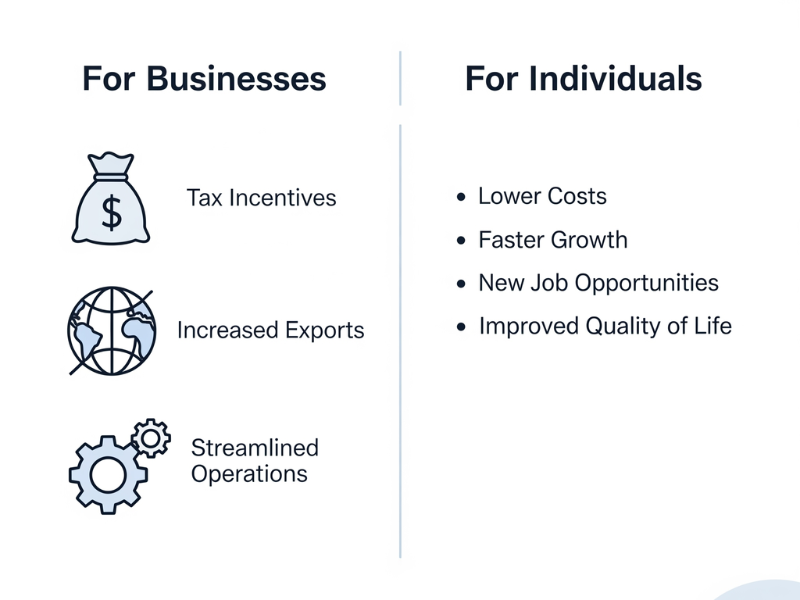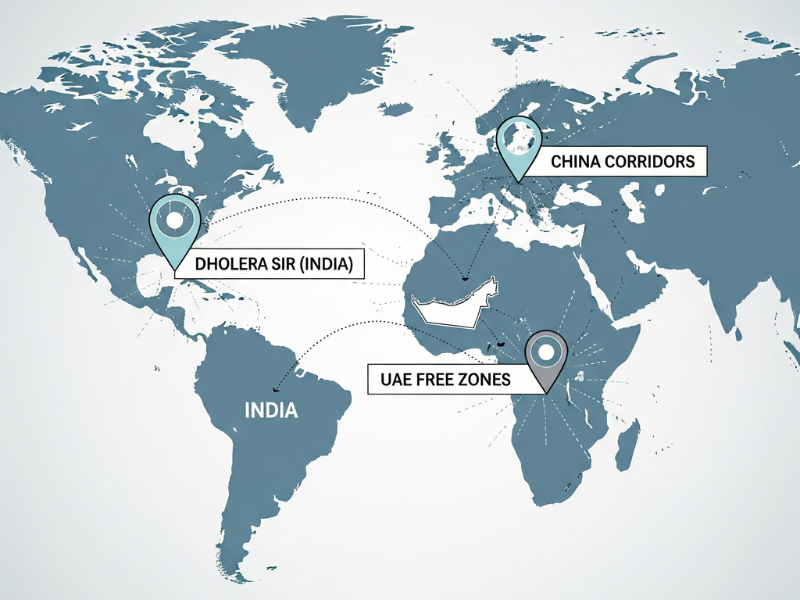Physical Address
304 North Cardinal St.
Dorchester Center, MA 02124
Physical Address
304 North Cardinal St.
Dorchester Center, MA 02124

Did you know that specially designated investment zones have fueled billions of dollars in foreign direct investment worldwide? A special investment region (SIR) isn’t just another economic term, it’s a game, changer for businesses, governments, and communities. These regions are designed to attract large-scale investment, create jobs, and boost industrial growth through targeted policies and infrastructure support.
In this article, we’ll break down the definition of a special investment region, explore its benefits, and look at global examples that prove how impactful they can be. Whether you’re an investor, policymaker, or just curious about economic development, this guide will give you a clear, practical overview of everything you need to know.

A special investment region (SIR) is a large-scale industrial and economic development zone created to attract investments in specific sectors. Governments usually designate these regions in areas with strategic geographic advantages, such as proximity to ports, airports, or trade routes. Unlike general industrial parks, SIRs are designed to be self-sustained with world-class infrastructure, residential areas, commercial spaces, and industrial clusters.
The idea is simple: provide a well-planned environment where businesses can thrive with fewer bureaucratic hurdles. Investors benefit from policies that reduce red tape, and local economies benefit from massive inflows of capital, technology, and job opportunities.
Many people confuse special investment regions with special economic zones (SEZs) or industrial corridors. While they share some similarities, they aren’t the same.
Think of it like this: an SEZ is one building in a neighborhood, an industrial corridor is the entire road, while a special investment region is the entire town built from scratch to support industries.
No SIR can succeed without government backing. Policies are at the core of making these regions attractive. Governments often:
For example, India’s Dholera Special Investment Region in Gujarat was backed by dedicated legislation, the Gujarat Special Investment Region Act. Similar legal frameworks exist in other countries, providing investors’ confidence and long-term stability.
Location is everything when it comes to attracting investment. An SIR is usually positioned near key trade hubs, such as seaports or airports, making it easier for industries to import raw materials and export finished goods.
Equally important is the internal infrastructure. Investors expect:
Without these, even the best government policies won’t be enough to convince businesses to set up shop. Infrastructure is the backbone that makes a special investment region more than just land on a map, it turns it into a functioning, competitive industrial hub.
Every special investment region (SIR) is unique in its geography and focus, but the core features are consistent across the world. These features are what set SIRs apart from regular industrial areas and make them appealing to investors.
One of the defining characteristics of an SIR is its scale. Unlike small industrial parks, these regions are spread across thousands of hectares, designed almost like new cities. They’re master-planned, meaning industries, housing, transport, and green spaces are all integrated from the start.
This scale allows governments and private players to attract diverse industries, manufacturing, IT, logistics, renewable energy, and more, within a single ecosystem. Investors don’t just get land; they get access to a long-term vision for industrial growth.
Most governments don’t have the resources to build everything alone. That’s why SIRs often operate through public-private partnerships (PPPs). The government provides land, regulatory frameworks, and sometimes funding, while private developers bring in capital, technology, and management expertise.
This model ensures faster project execution and reduces the financial burden on the state. It also reassures investors that infrastructure development will meet global standards, since private partners usually compete to deliver the best results.
Businesses won’t commit millions of dollars without assurance of basic utilities. SIRs are designed with reliable, high-capacity utility systems from the beginning:
For investors, this is a game-changer. Instead of struggling with local utility shortages or unreliable infrastructure, they enter a plug-and-play environment where most challenges are already solved.
One of the biggest hurdles investors face in many countries is bureaucracy. Endless paperwork, long approval times, and overlapping authorities can scare off potential businesses.
Special investment regions tackle this with single-window clearance systems. Investors can handle land acquisition, licensing, environmental approvals, and tax registrations through a centralized authority.
This doesn’t just save time, it builds trust. When companies see that a region has transparent, streamlined processes, they’re far more likely to commit to long-term projects.
From a business perspective, special investment regions (SIRs) are designed to remove obstacles and maximize opportunities. These regions create a fertile environment for companies to grow, compete globally, and reduce operational risks.

One of the biggest draws for investors is the tax advantage. Governments often offer:
These benefits allow businesses to reinvest savings into expansion, R&D, or workforce development. In competitive industries like manufacturing or IT, even a small tax break can make the difference between choosing one region over another.
SIRs are almost always located near major trade routes, ports, airports, and highways. This strategic placement reduces logistics costs and shortens delivery timelines.
For exporters, it means easier access to international markets. For importers, it ensures raw materials arrive faster and cheaper. In an era where supply chain efficiency can make or break a company, location is not just convenient, it’s critical.
Running operations in a typical industrial setting often comes with unpredictable costs: unreliable power, poor transport links, or inadequate waste management. In an SIR, much of this is already taken care of.
Businesses benefit from:
This shared infrastructure model allows companies to save significantly on setup and operational costs, while also reducing risk.
Another advantage is the ability to build or join industry clusters. For example, a car manufacturer setting up in an SIR might find its suppliers, auto parts, logistics providers, IT services, already nearby.
This cluster effect:
It’s not just about operating in isolation; it’s about becoming part of a networked economy within the SIR, where industries can scale faster than they could on their own.
While businesses get obvious advantages inside a special investment region (SIR), the real ripple effect is felt in the local economy. These regions can completely transform surrounding communities by bringing in opportunities, infrastructure, and long-term growth.
The first and most visible benefit is employment. Large-scale projects in SIRs create thousands of direct jobs in factories, logistics, and administration. But the impact doesn’t stop there, indirect jobs flourish in retail, construction, hospitality, and services that support the growing population.
Governments and private developers often set up training centers and technical institutes to prepare locals for specialized roles. This improves the skill base of the workforce and gives communities long-term career opportunities instead of just short-term employment.
Small and medium-sized enterprises (SMEs) often become the backbone of an SIR. When big corporations move in, they need suppliers, contractors, maintenance services, and logistics providers. Local businesses naturally step in to fill these roles.
This leads to:
Instead of replacing local industries, SIRs can elevate them by plugging them into larger supply chains.
Special investment regions are magnets for foreign direct investment. With simplified policies, tax incentives, and strong infrastructure, international companies are more confident about setting up operations.
FDI doesn’t just mean capital inflows. It often comes with new technology, better management practices, and global market access. For the local economy, this can mean faster modernization and competitiveness.
Perhaps the most long-term benefit is regional transformation. Before an SIR, many of these areas were underdeveloped or rural. Once the region is designated and developed, new roads, housing projects, schools, and hospitals follow.
Urbanization is not always smooth, but when managed well, it can:
The result is not just an industrial hub, but a balanced growth model where both industries and communities thrive together.
The concept of a special investment region (SIR) isn’t limited to one country. Different nations have created their own versions, often under different names, but with the same purpose, attracting large-scale investment, creating jobs, and accelerating economic development.

India has been one of the most ambitious adopters of SIRs. The Dholera Special Investment Region in Gujarat is perhaps the most well-known example. Spread over 920 square kilometers, it was planned as part of the Delhi-Mumbai Industrial Corridor.
What makes Dholera stand out is its smart city approach:
Though still under development, Dholera has become a showcase of how a well-planned SIR can combine industrial growth with sustainability.
China has perfected the model of large-scale industrial zones. While many of these are called industrial corridors or economic development zones, they function much like SIRs. Cities like Shenzhen started as special zones and grew into global powerhouses of technology and manufacturing.
China’s success comes from:
These hubs show how quickly an economy can leapfrog when special regions are managed effectively.
The United Arab Emirates (UAE) took a slightly different approach by creating free zones in cities like Dubai and Abu Dhabi. These zones are smaller than Indian SIRs but operate with the same purpose, providing tax exemptions, 100% foreign ownership, and simplified regulations.
Examples include:
These free zones have turned the UAE into one of the most attractive business hubs in the Middle East.
Beyond the major players, other regions are catching up fast:
Each of these regions adapts the SIR concept to local strengths, proving that the model is flexible and effective worldwide.
For all their promise, special investment regions (SIRs) are not without hurdles. Many projects look impressive on paper but stumble when faced with real-world complexities. Recognizing these challenges is important for governments, investors, and local communities to make these regions truly sustainable.
One of the biggest challenges is land acquisition. Large-scale projects often require thousands of hectares, and this land isn’t always empty. Farmers, indigenous groups, or local residents may depend on it for their livelihoods.
This creates conflicts, delays, and in some cases, outright opposition. Environmental issues add another layer, deforestation, water resource strain, and pollution risks can cause backlash from activists and communities. Striking a balance between development and sustainability remains a delicate task.
While SIRs are meant to drive growth, unchecked development can harm long-term prospects. If industries consume resources faster than they can be replenished, the very foundation of the region becomes unstable.
Forward-thinking SIRs are adopting green infrastructure:
Still, not all regions implement these measures effectively, leading to concerns about whether rapid development undermines environmental health.
Another challenge lies in making sure the benefits don’t just go to big corporations. Locals often fear being displaced without adequate compensation or left out of the economic boom altogether.
For SIRs to succeed long-term, they must:
Without these measures, resentment can build, creating social and political risks for the region.
Finally, the success of an SIR depends heavily on political stability and consistent policies. If governments change regulations frequently, or if political instability disrupts planning, investors lose confidence.
Economic risks like inflation, currency fluctuations, or global downturns can also affect investment flows. Even the most well-planned SIRs can stall if external conditions shift dramatically.
This is why governments and private stakeholders must build flexibility into their plans, ensuring resilience against both political uncertainty and economic shocks.

Special investment regions are evolving rapidly as economies adapt to new technologies, climate pressures, and global trade shifts. Looking ahead, SIRs are expected to play an even bigger role in shaping the way industries, governments, and communities interact.
Several global trends are reshaping how these regions are designed and managed:
Technology is at the heart of the next generation of SIRs. Innovations include:
These advancements not only make regions more efficient but also more attractive to investors seeking future-proof industries.
By 2030 and beyond, experts predict SIRs will:
The long-term outlook is optimistic, provided stakeholders maintain a balance between economic growth, social inclusion, and environmental sustainability.
Special investment regions are more than just clusters of businesses and infrastructure. They are engines of innovation, trade, and sustainable growth that influence how nations position themselves in the global economy. By combining targeted policies with modern technology and private-sector collaboration, these regions create opportunities that extend far beyond their borders.
For governments, SIRs offer a pathway to industrialization, job creation, and global competitiveness. For investors, they provide structured environments with reduced risks and access to cutting-edge ecosystems. And for communities, they bring the promise of improved livelihoods, better infrastructure, and inclusive development when managed responsibly.
As the world faces mounting economic and environmental challenges, special investment regions stand out as one of the most practical tools for building resilience. They are not just about attracting capital today, they are about shaping the industries and societies of tomorrow.
Want to dive deeper into financial topics? Check out our other guides:
A special investment region (SIR) is a large designated zone where governments provide favorable policies, tax benefits, and infrastructure support to attract investment in industries such as manufacturing, technology, energy, or logistics.
An SIR works by clustering businesses within a defined area and giving them access to world-class infrastructure, simplified regulations, and economic incentives. This setup makes it easier for companies to grow, collaborate, and trade globally.
Both aim to attract investment, but an SIR is usually much larger in scale and designed for long-term regional development, often integrating industrial, residential, and social infrastructure. Special economic zones (SEZs) are generally smaller and focus primarily on export-driven industries.
SIRs offer multiple benefits, including tax incentives, better infrastructure, streamlined business processes, and opportunities for collaboration between companies. They also create jobs, promote exports, and boost economic growth in the host region.
Industries such as manufacturing, renewable energy, logistics, information technology, and biotechnology typically benefit the most. The industries prioritized often depend on government policy and regional resources.
Yes. Risks may include changes in government policies, infrastructure delays, environmental challenges, and uneven community benefits. However, many governments mitigate these risks through long-term policy support and public-private partnerships.
Investors can participate by partnering with local authorities, setting up operations within the zone, or investing in companies already operating there. Most SIRs have dedicated agencies that assist with registrations and approvals.